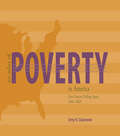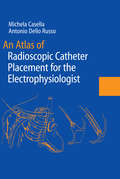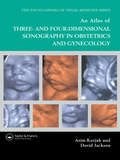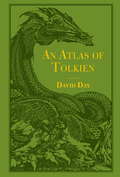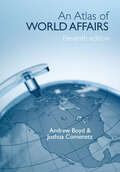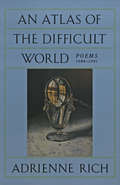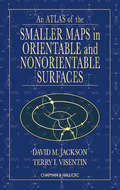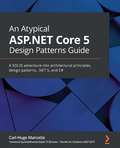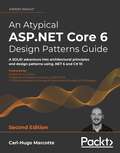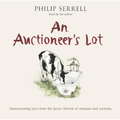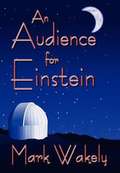- Table View
- List View
An Atlas of Osteoporosis
by John C. Stevenson Michael S. MarshThe Third edition of this successful Atlas of Osteoporosis is designed to provide a wide range of physicians with a pictorial guide to this important disease. The illustrations are an excellent teaching resource and the text provides a concise overview to osteoporosis. For the first time, text and illustrations are fully integrated.The book con
An Atlas of Poverty in America: One Nation, Pulling Apart 1960–2003
by Amy GlasmeierPersistant poverty has long been one of America's most pressing and intractable problems. According to some estimates, by 2003, almost twenty-five percent of the America's countries had per-capita incomes below one half the national average, high unemployment, low labour force participation rates, and a high dependency on government transfer payments - all measures of economic distress. An Atlas of Poverty in America shows how and where America's regional development patterns have become more uneven, and graphically illustrates the increasing number of communities falling behind the national economic average. Readers will be able to use this Atlas to see how major events and trends have impacted the scope and extent of American poverty in the past half-century:economic globalization, the rise of the sunbelt, decline of the welfare state, and the civil rights movement. Also includes 195 colour maps.
An Atlas of Radioscopic Catheter Placement for the Electrophysiologist
by Andrea Natale Michela Casella Antonio Dello Russo P. Della BellaAn Atlas of Radioscopic Catheter Placement is unique, and has been conceived as a handy reference guide for students, interventional cardiologists, nurses and electrophysiology technicians. It includes plenty of schemes and X-ray images, and every EP correct catheter positioning is explained step by step through detailed descriptions of the necessary manoeuvres, including some "trucks" brought about by the experience.
An Atlas of Reproductive Physiology in Men
by B. Hafez S.E. Hafez Saad Dean HafezMeeting the needs of professionals in this growing specialty, Atlas of Reproductive Physiology in Men summarizes some of the latest research in the field. Packed with tables, color illustrations, and photographs, the book covers laboratory techniques and morphological, anatomical, biochemical, immunological, hereditary, and microbiological parameters and their clinical applications. A comprehensive and well-referenced resource, the atlas bridges the gap between basic and clinical science.
An Atlas of Rural Protest in Britain 1548-1900 (Routledge Library Editions: Rural History #2)
by Andrew CharlesworthThe outbreaks and collective violence arising from the tensions existing within society have long been themes in the study of British social history. This book, first published in 1983, attempts to survey the whole range of these rural riots, to compare and contrast them, and to draw general conclusions. Seventy-five maps are included in this volume, each with an accompanying commentary written by an authority on the particular subject. Taken together, the maps show how the distribution of protest changed over time, how particular forms of protest – riots connected with land, with food and with labour – altered as Britain developed from a predominantly feudal to a prominently capitalist society. This title will be of interest to students of history.
An Atlas of Selected Galaxies: With Illustrations of Photometric Analyses
by Bunshiro Takase Keiichi Kodaira Sadanori OkamuraIt is only several decades since galaxies were recognized as huge aggregations of matter in the universe which consist of myriads of stars and vast clouds of gas. The wide variety of shapes of galaxies is one of the wonders of the universe. Attempts to classify galaxies have continued since an early stage of study, when they were still called nebulae. The first step towards classification was a grouping of the patterns; the second step a systematic arrangement of various morphological types. Classification schemes that are in present use, such as Hubble's, are in the second group. These classifications are usually based on pattern recognition after a visual inspection of the photographic image of the galaxy, and is therefore qualitative and more or less subjective. Using surface photometry of galaxies, a technique which has advanced remarkably in recent years, photographs of galaxies taken in several colour bands can now be efficiently reduced to photometric data. Analysis of this data gives quantitative information on the luminosity and colour distribution for every element of galaxies. The Atlas of Selected Galaxies presents photographs taken with the Okayama 188 cm reflector and the Kiso 105 cm Schmidt telescope for the purpose of photometric analysis. A large number of illustration are given to demonstrate the way in which photographs of galaxies are reduced into quantitative data. These illustrations also show some representative results obtained in the course of the editors' work on the quantitative classification of galaxies. Part I, General Description of the Classification and Photometric Analyses, includes eight sections, whose authors all shared the photometric work and prepared the photographs. In Part II, The Atlas, the illustrations are arranged in sections corresponding to those in Part I. Part III includes tables of data for the atlas.
An Atlas of Three- and Four-Dimensional Sonography in Obstetrics and Gynecology
by David JacksonAs the use of three-dimensional ultrasound in clinical practice increases, the need for a reference covering this and other emerging technologies also increases. The book presents three-dimensional ultrasound images in full colour accompanied by extensive captions and expert textual commentary. It provides authoritative coverage of the latest devel
An Atlas of Tolkien: An Illustrated Exploration of Tolkien's World (Tolkien)
by David DayThis lavish, colour atlas is a complete guide to the weird and wonderful geography of Tolkien's world. Packed with full page maps and illustrations of events in the annals of Middle-earth, it is the perfect companion to the bestselling A Dictionary of Tolkien. This book is unofficial and is not authorised by the Tolkien Estate or HarperCollins Publishers.
An Atlas of World Affairs
by Joshua Comenetz Andrew BoydThe economic, social and environmental systems of the world remain in turmoil. Recent years have seen possibly irrevocable change in the politics of Europe, Asia, Africa and Latin America. This entirely revised and updated 11th edition describes the people, factions, and events that have shaped the modern world from the Second World War to the present day. International issues and conflicts are placed in their geographical contexts through the integration of over one hundred maps. The political context provided for current events will be invaluable to all those uncertain about the changing map of Europe and Africa, conflicts in the Middle East, and the appearances in the headlines and on our television screens by al-Qaeda, Chechnya, the Taliban, Mercosur, Somaliland, Kosovo, AIDS, OPEC, and Schengenland. Critical new issues are covered including the war on terrorism, nuclear proliferation, European Union expansion, and the pressing environmental concerns faced by many sovereign states. This edition provides guidance through all these recent changes (and many more). This book offers up-to-date coverage of all regions in great detail. It contains an objective and concise explanation of current events, combining maps with their geopolitical background. It provides a clear context for events in the news, covering the Middle East, Korea, China, the European Union, east Africa, and every other part of the world. Revised and in print since 1957, An Atlas of World Affairs continues to provide a valuable guide for the student, teacher, journalist and all those interested in current affairs and post-war political history.
An Atlas of the Difficult World: Poems 1988-1991
by Adrienne RichWinner of the Los Angeles Times Book Prize. In this, her thirteenth book of verse, the author of "The Dream of a Common Language" and "Snapshots of a Daughter-in-Law" writes of war, oppression, the future, death, mystery, love and the magic of poetry.
An Atlas of the Smaller Maps in Orientable and Nonorientable Surfaces (Discrete Mathematics and Its Applications)
by David Jackson Terry I. VisentinMaps are beguilingly simple structures with deep and ubiquitous properties. They arise in an essential way in many areas of mathematics and mathematical physics, but require considerable time and computational effort to generate. Few collected drawings are available for reference, and little has been written, in book form, about their enumerative a
An Atmospherics of the City: Baudelaire and the Poetics of Noise (Verbal Arts: Studies in Poetics)
by Ross ChambersWhat happens to poetic beauty when history turns the poet from one who contemplates natural beauty and the sublime to one who attempts to reconcile the practice of art with the hustle and noise of the city?An Atmospherics of the City traces Charles Baudelaire’s evolution from a writer who practices a form of fetishizing aesthetics in which poetry works to beautify the ordinary to one who perceives background noise and disorder—the city’s version of a transcendent atmosphere—as evidence of the malign work of a transcendent god of time, history, and ultimate destruction.Analyzing this shift, particularly as evidenced in Tableaux parisiens and Le Spleen de Paris, Ross Chambers shows how Baudelaire’s disenchantment with the politics of his day and the coincident rise of overpopulation, poverty, and Haussmann’s modernization of Paris influenced the poet’s work to conceive a poetry of allegory, one with the power to alert and disalienate its otherwise inattentive reader whose senses have long been dulled by the din of his environment.Providing a completely new and original understanding of both Baudelaire’s ethics and his aesthetics, Chambers reveals how the shift from themes of the supernatural in Baudelaire to ones of alienation allowed a new way for him to articulate and for his fellow Parisians to comprehend the rapidly changing conditions of the city and, in the process, to invent a “modern beauty” from the realm of suffering and the abject as they embodied forms of urban experience.
An Attempt to Profile the Finances of China's Enterprise Sector
by Cem Karacadag Paul HeytensA report from the International Monetary Fund.
An Attic Philosopher, complete
by Emile SouvestreAlways to mistake feeling for evidence Ambroise Pare: 'I tend him, God cures him!' Are we then bound to others only by the enforcement of laws Attach a sense of remorse to each of my pleasures Brought them up to poverty But above these ruins rises a calm and happy face Carn-ival means, literally, "farewell to flesh! Coffee is the grand work of a bachelor's housekeeping Contemptuous pride of knowledge Death, that faithful friend of the wretched Defeat and victory only displace each other by turns Did not think the world was so great Do they understand what makes them so gay? Each of us regards himself as the mirror of the community Ease with which the poor forget their wretchedness Every one keeps his holidays in his own way Fame and power are gifts that are dearly bought Favorite and conclusive answer of his class--"I know" Fear of losing a moment from business Finishes his sin thoroughly before he begins to repent Fortune sells what we believe she gives Her kindness, which never sleeps Houses are vessels which take mere passengers Hubbub of questions which waited for no reply I make it a rule never to have any hope Ignorant of what there is to wish for Looks on an accomplished duty neither as a merit nor a grievance Make himself a name: he becomes public property Moderation is the great social virtue More stir than work My patronage has become her property No one is so unhappy as to have nothing to give Not desirous to teach goodness Nothing is dishonorable which is useful Our tempers are like an opera-glass Poverty, you see, is a famous schoolmistress Power of necessity Prisoners of work Progress can never be forced on without danger Question is not to discover what will suit us Richer than France herself, for I have no deficit in my budget Ruining myself, but we must all have our Carnival Satisfy our wants, if we know how to set bounds to them Sensible man, who has observed much and speaks little So much confidence at first, so much doubt at las Sullen tempers are excited by the patience of their victims The happiness of the wise man costs but little The man in power gives up his peace Two thirds of human existence are wasted in hesitation Virtue made friends, but she did not take pupils We do not understand that others may live on their own account We are not bound to live, while we are bound to do our duty What have you done with the days God granted you What a small dwelling joy can live You may know the game by the lair
An Attitude of Excellence: Get The Best From Yourself, Your Team, and Your Organization
by Dr. Willie JolleyYou imagine a "new and improved" version of yourself—one who has achieved your goals and reached your definition of success. But you stop at wanting to be better because you don't feel you have the tools to achieve it. You do have the power to make yourself into a winner. Success isn't a matter of chance—it's a matter of choice. It all comes down to your attitude and a mindset to pursue excellence. When you make the conscious choice to develop an attitude of excellence, you will achieve more, enjoy more, have better relationships, take better care of yourself physically and mentally, and vastly improve the quality of your day-to-day life. Armed with a positive attitude and the determination to pursue excellence, plus a coach to help you stay focused, you will become the best version of yourself. Dr. Willie Jolley is a world-renowned speaker and motivational coach. He is the expert Ford Motor Company turned to while on the brink of bankruptcy, and he helped the company go on to reject a government bailout and to reach billion-dollar profits. In this powerful new book, An Attitude of Excellence: Get the Best from Yourself, Your Team, and Your Organization, he teaches readers how to achieve more in their lives—both professionally and personally. Dr. Jolley's work has inspired millions with a simple message: The best way to grow your future is to grow yourself, and the best way to grow an organization is to grow the people in that organization. Why? Because great people will give great service, while negative people will kill your future. This eye-opening book features T.I.P.S. (Tips, Ideas, Principles & Strategies) everyone can use to enhance the quality of our relationships and our lives, both at work and at home, using the power of an attitude of excellence.
An Attitude of Gratitude: 21 Life Lessons
by Keith D. HarrellIn this heartfelt memoir, motivational speaker and life coach Keith D. Harrell writes passionately about the lessons he’s learned from his parents, grandmother, teachers, coaches, mentors, and friends as he overcame stuttering to become one of the nation’s top-ranked professional speakers. Tall, skinny and shy, Harrell painfully learned on his first day of school that he couldn’t talk like the other students. Embarrassed by the kids’ teasing and feeling dejected, he ran home during recess, where he was met by an understanding mom who wouldn’t allow him to remain discouraged. The lesson Harrell gained from this experience and imparts to his readers is: God specializes in originals. He doesn’t make junk! Each chapter in this heartfelt book begins with a quote from the Bible and concludes with a touching and insightful life lesson. Harrell’s story encompasses his years of speech therapy, the awkwardness of being a foot or two taller than his elementary-school teachers, his father’s tough love, the anguish of his parents’ divorce, gaining confidence through playing basketball—and eventually being scouted by the NBA and then watching his dream evaporate. He goes on to recount the trials he underwent in the corporate world as he sought out his true passion, and how he built a fledgling business into a million-dollar enterprise, eventually receiving enormous acclaim as a professional speaker. Harrell’s faith in God and unflagging attitude propelled him to success as he enthusiastically tackled each obstacle that beset him along his path. In An Attitude of Gratitude, he presents this story as an inspiring source of encouragement for anyone who has ever experienced setbacks and wants to learn how to become better equipped to handle each challenge as it arises.
An Attorney's Guide to ERISA Disability Claims
by Scott RiemerAn Attorney's Guide to ERISA Disability Claims is an essential resource that gives you the specialized knowledge you need to thoroughly prepare ERISA disability claims through both the initial application process and the insurance company's appeal process. Disability insurers scrutinize claims for any shred of evidence to support a decision that the insured can still perform her occupation. Sometimes just a line or two in the doctor's treatment notes or a minute on a surveillance video is enough. In assessing an occupation's requirements, insurers routinely ignore significant demands, such as travel, long hours, high stress, and quick thinking. This comprehensive guide tells you how to anticipate and respond to these and similar (sometimes outrageous) insurer tactics. The surest way to resolve your client's ERISA disability claim favorably without litigation is to follow Scott Riemer's guidance. Prepare your client's application and appeal as though you expect litigation to be necessary. When insurers know you are ready for court, they are more likely to pay the claim and save litigation for someone else's client. If you do need to litigate, you will be ready.
An Atypical ASP.NET Core 5 Design Patterns Guide: A SOLID adventure into architectural principles, design patterns, .NET 5, and C#
by Carl-Hugo Marcotte Abdelhamid ZebdiA .NET developer's guide to crafting robust, maintainable, and flexible web apps by leveraging C# 9 and .NET 5 features and component-scale and application-scale design patternsKey FeaturesApply software design patterns effectively, starting small and progressing to cloud-scaleDiscover modern application architectures such as vertical slice, clean architecture, and event-driven microservicesExplore ASP.NET design patterns, from options to full-stack web development using BlazorBook DescriptionDesign patterns are a set of solutions to many of the common problems occurring in software development. Knowledge of these design patterns helps developers and professionals to craft software solutions of any scale. ASP.NET Core 5 Design Patterns starts by exploring basic design patterns, architectural principles, dependency injection, and other ASP.NET Core mechanisms. You'll explore the component scale as you discover patterns oriented toward small chunks of the software, and then move to application-scale patterns and techniques to understand higher-level patterns and how to structure the application as a whole. The book covers a range of significant GoF (Gangs of Four) design patterns such as strategy, singleton, decorator, facade, and composite. The chapters are organized based on scale and topics, allowing you to start small and build on a strong base, the same way that you would develop a program. With the help of use cases, the book will show you how to combine design patterns to display alternate usage and help you feel comfortable working with a variety of design patterns. Finally, you'll advance to the client side to connect the dots and make ASP.NET Core a viable full-stack alternative. By the end of the book, you'll be able to mix and match design patterns and have learned how to think about architecture and how it works.What you will learnApply the SOLID principles for building flexible and maintainable softwareGet to grips with .NET 5 dependency injectionWork with GoF design patterns such as strategy, decorator, and compositeExplore the MVC patterns for designing web APIs and web applications using RazorDiscover layering techniques and tenets of clean architectureBecome familiar with CQRS and vertical slice architecture as an alternative to layeringUnderstand microservices, what they are, and what they are notBuild ASP.NET UI from server-side to client-side BlazorWho this book is forThis design patterns book is for intermediate-level software and web developers with some knowledge of .NET who want to write flexible, maintainable, and robust code for building scalable web applications. Knowledge of C# programming and an understanding of web concepts like HTTP is necessary.
An Atypical ASP.NET Core 6 Design Patterns Guide: A SOLID adventure into architectural principles and design patterns using .NET 6 and C# 10, 2nd Edition
by Carl-Hugo Marcotte Abdelhamid ZebdiThe professional developer's essential guide to building robust, maintainable, and flexible web apps by leveraging C# 10 and .NET 6 features and component- and application-scale design patternsKey FeaturesApply the SOLID architectural principles and software design patterns effectively with a focus on dependency injectionDiscover modern application architectures such as vertical slice, clean architecture, and event-driven microservicesExplore full-stack ASP.NET Core with an overview of BlazorBook DescriptionAn Atypical ASP.NET Core 6 Design Patterns Guide, Second Edition approaches programming like playing with LEGO®: snapping small pieces together to create something beautiful. Thoroughly updated for ASP.NET Core 6, with further coverage of microservices patterns, data contracts, and event-driven architecture, this book gives you the tools to build and glue reliable components together to improve your programmatic masterpieces.The chapters are organized based on scale and topic, allowing you to start small and build on a strong base, the same way that you would develop a program. You will begin by exploring basic design patterns, SOLID architectural principles, dependency injection, and other ASP.NET Core 6 mechanisms. You will explore component-scale patterns, and then move to higher level application-scale patterns and techniques to better structure your applications. Finally, you'll advance to the client side to connect the dots with tools like Blazor and make ASP.NET Core a viable full-stack web development framework.You will supplement your learning with practical use cases and best practices, exploring a range of significant Gang of Four (GoF) design patterns along the way. By the end of the book, you will be comfortable combining and implementing patterns in different ways, and crafting software solutions of any scale.What you will learnApply the SOLID principles for building flexible and maintainable softwareGet to grasp .NET dependency InjectionWork with GoF design patterns such as strategy, decorator, facade, and compositeExplore the MVC patterns for designing web APIs and web applications using RazorDiscover layering techniques and tenets of clean architectureBecome familiar with CQRS and vertical slice architecture as an alternate to layeringUnderstand microservices and when they can benefit your applicationsBuild an ASP.NET user interfaces from server-side to client-side BlazorWho this book is forThe book is intended for intermediate software and web developers with an understanding of .NET who want to write flexible, maintainable, and robust code for building scalable web applications. Knowledge of C# programming and an understanding of web concepts like HTTP is necessary.
An Auctioneer's Lot
by Philip SerrellFrom priceless eighteenth-century dining tables hidden away in decaying farm sheds to tattooed travellers with a penchant for Wedgewood china, professional auctioneer Philip Serrell has seen it all. In An Auctioneer's Lot he brings to life a world in which the most valuable antiques frequently turn up in the most unlikely places - and accompanied by the most unlikely people. For over twenty years he has uncovered a huge range of priceless (and occasionally worthless) antiques, and he has met, done business with and befriended people from some odd corners of English life. Funny, startling and sometimes poignant, these stories of ordinary people with extraordinary possessions are also the perfect inspiration for anyone who's ever wondered whether they might just be sitting on a fortune . . .
An Auctioneer's Lot
by Philip SerrellFrom priceless eighteenth-century dining tables hidden away in decaying farm sheds to tattooed travellers with a penchant for Wedgewood china, professional auctioneer Philip Serrell has seen it all. In An Auctioneer's Lot he brings to life a world in which the most valuable antiques frequently turn up in the most unlikely places - and accompanied by the most unlikely people. For over twenty years he has uncovered a huge range of priceless (and occasionally worthless) antiques, and he has met, done business with and befriended people from some odd corners of English life. Funny, startling and sometimes poignant, these stories of ordinary people with extraordinary possessions are also the perfect inspiration for anyone who's ever wondered whether they might just be sitting on a fortune . . .
An Audience for Einstein
by Mark WakelyProfessor Percival Marlowe is a brilliant, elderly astrophysicist who's dying, his greatest achievement still unfinished and now beyond his diminished means. Doctor Carl Dorning, a neurosurgeon, finally discovers a secret method of transplanting memories from one person to another, thanks to Marlowe's millions. Miguel Sanchez, a homeless boy, agrees to become the recipient of Marlowe's knowledge and personality in this unorthodox experiment, enticed by Dorning's promises of intelligence, wealth and respect, but dangerously unaware that his own identity will be lost forever. What results is a seesaw battle for control of Miguel's body, as Marlowe learns to his dismay what his lifetime of arrogance and conceit has earned him. And when Marlowe stumbles upon the shocking procedure Dorning used in desperation to succeed, the professor does what he must to defeat Dorning and redeem himself at last.

